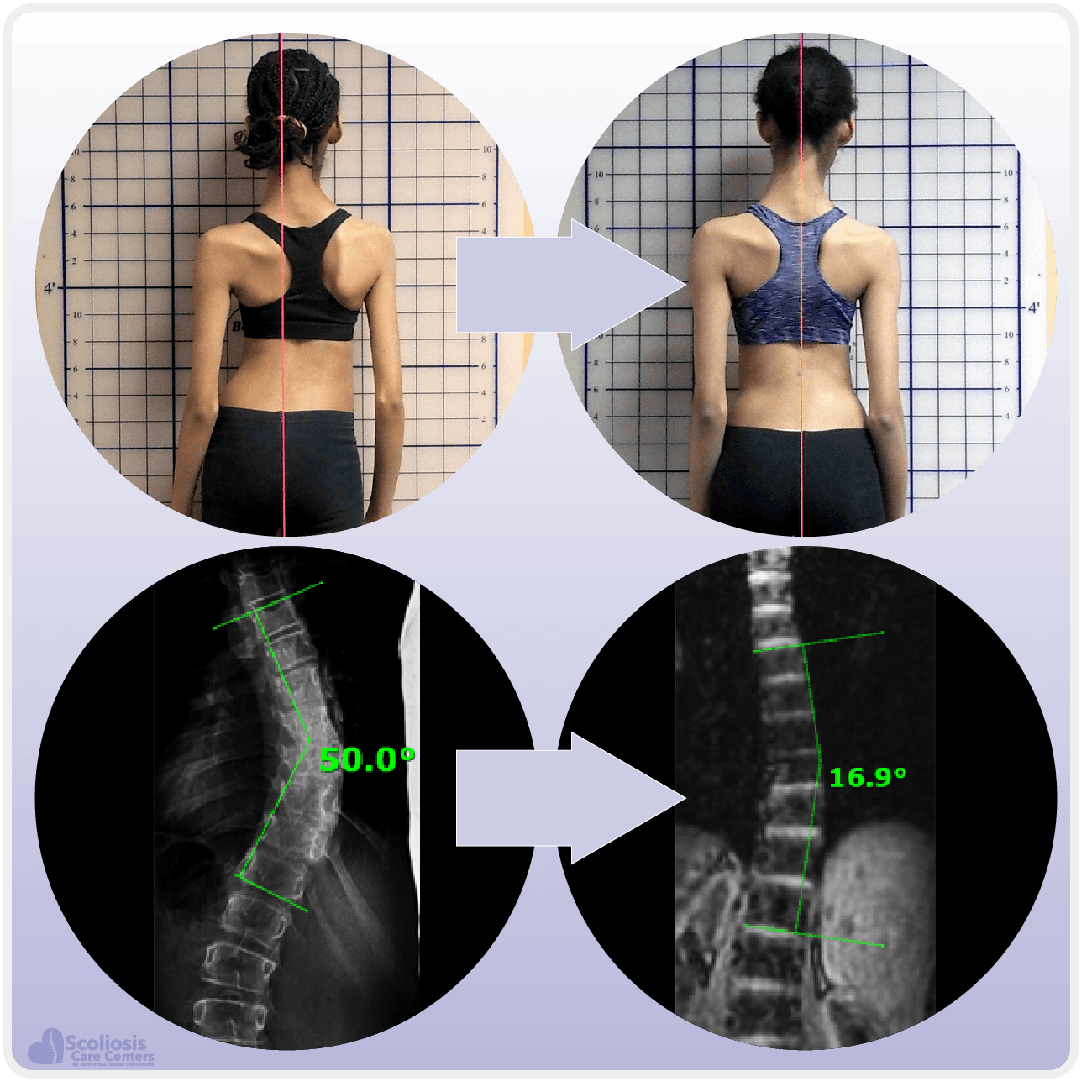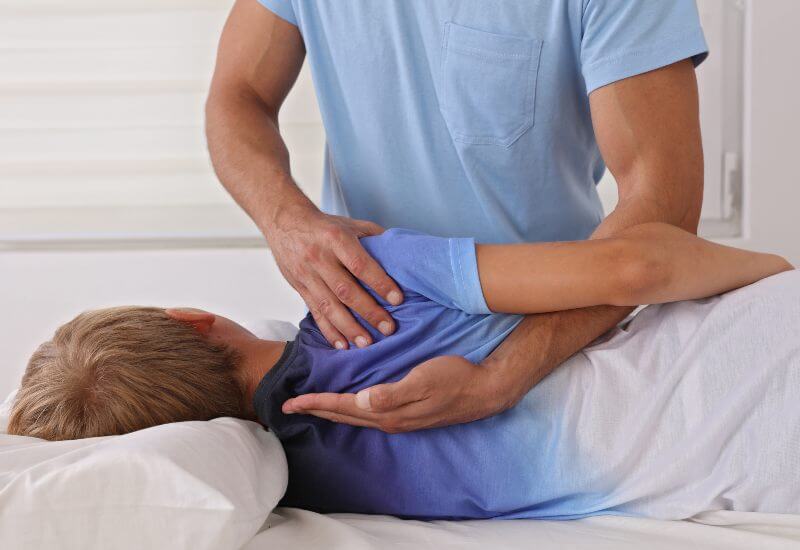Scoliosis, a medical condition characterized by an abnormal curvature of the spine, affects millions of individuals across the world. It can develop during childhood or adolescence and, if left untreated, can lead to chronic pain, posture problems, and even respiratory issues. Traditionally, severe scoliosis has often been treated with surgical procedures, but not everyone is ready for or in need of surgery. Thankfully, scoliosis treatment without surgery has gained momentum as a safe and effective alternative, especially in India.

India has emerged as a global hub for holistic and non-invasive scoliosis care, offering advanced scoliosis therapy in India without resorting to spinal fusion or surgical implants. This article explores these conservative treatment options, their benefits, and how they can significantly improve quality of life for scoliosis patients.
Understanding Scoliosis
Scoliosis is a spinal deformity where the spine curves sideways in an "S" or "C" shape. It may be congenital (from birth), idiopathic (of unknown cause), or neuromuscular (related to muscle and nerve conditions). The severity of scoliosis can range from mild to severe, and its treatment varies accordingly.
While surgery is usually recommended for spinal curves greater than 45-50 degrees, many mild to moderate cases can benefit from non-surgical approaches. Scoliosis treatment without surgery is not only cost-effective but also significantly lowers the risks and recovery time associated with surgical intervention.
Non-Surgical Approaches to Scoliosis Treatment
Here are the most commonly used non-surgical treatments for scoliosis:
1. Physiotherapy and Exercise Therapy
Physical therapy plays a crucial role in strengthening the muscles around the spine and improving posture. Programs like the Schroth Method, SEAS (Scientific Exercise Approach to Scoliosis), and FITS (Functional Individual Therapy of Scoliosis) are widely used for conservative scoliosis management.
These exercises are customized based on the patient's spinal curve and focus on:
Spinal elongation and de-rotation
Breathing techniques to improve lung function
Postural training to correct asymmetry
2. Bracing
Bracing is a widely recommended non-surgical treatment for adolescents with scoliosis. A custom-made brace is designed to prevent further curvature as the child grows. Bracing is most effective when the spine is still growing and is typically worn for 16-20 hours per day.
Types of braces include:
Boston Brace
Wilmington Brace
SpineCor Dynamic Brace
3. Chiropractic Care
Chiropractic adjustments can be effective in reducing pain and improving spinal alignment. While chiropractic care doesn’t "straighten" the spine, it can help manage symptoms and enhance mobility.
4. Alternative Therapies
India offers a range of alternative therapies like Ayurveda, yoga, and acupuncture as complementary scoliosis treatments. These therapies aim to restore body balance and relieve muscle tension. Yoga, in particular, is known to improve posture, flexibility, and back strength.
Why Choose Scoliosis Therapy in India?
India has become a sought-after destination for scoliosis therapy due to several key advantages:
Affordable Treatment Options: Compared to Western countries, scoliosis treatment in India is significantly more economical.
Expert Medical Professionals: Indian therapists and orthopaedic specialists are well-trained in global non-surgical scoliosis management techniques.
Comprehensive Care: Clinics often offer multidisciplinary approaches combining physical therapy, chiropractic care, yoga, and lifestyle coaching.
Advanced Facilities: Many Indian rehabilitation centers are equipped with cutting-edge diagnostic and therapeutic equipment for scoliosis management.
Whether you are a resident of India or seeking medical tourism options, the country provides a blend of traditional healing systems and modern physiotherapy approaches.
Scoliosis and Height Gain: Is It Possible?
Many patients wonder if scoliosis treatment without surgery can improve their height. In some cases, spinal curvature can lead to a noticeable reduction in stature. While surgical correction might offer more dramatic height improvement, non-surgical scoliosis therapy can also help.
Through spinal decompression exercises, posture correction, and stretching routines, patients may experience a modest increase in height — sometimes by 1 to 2 inches. Additionally, for patients who are looking for targeted height gain surgery in India, consultations with orthopaedic specialists are available.
It's important to note that height gain should not be the primary goal of scoliosis treatment. Instead, the focus should be on reducing curvature progression, improving posture, and enhancing quality of life.
When Should You Consider Non-Surgical Scoliosis Treatment?
Non-surgical treatment is generally recommended if:
The spinal curve is below 40 degrees
The patient is still growing
The symptoms include back pain, poor posture, or imbalance
The individual prefers a conservative approach
Even post-surgical patients can benefit from therapy to maintain flexibility and strength.

FAQs on Scoliosis Treatment Without Surgery
Q1: Can scoliosis be treated without surgery?
Yes, mild to moderate cases of scoliosis can often be managed effectively without surgery using physiotherapy, bracing, and posture correction techniques.
Q2: Is non-surgical scoliosis treatment effective?
Absolutely. Many patients experience reduced spinal curvature progression, better posture, and pain relief with non-surgical scoliosis therapy, especially when started early.
Q3: What is the cost of scoliosis therapy in India?
The cost varies depending on the clinic, city, and duration of therapy. On average, non-surgical scoliosis treatment in India is significantly more affordable than in Western countries, with packages ranging from ₹10,000 to ₹50,000 or more depending on the extent of treatment.
Q4: Can scoliosis therapy increase my height?
Scoliosis therapy can improve posture, which may result in a slight increase in height. However, it’s not a guaranteed outcome. For those specifically seeking height enhancement, height gain surgery in India might be a better option, though it is more invasive.
Q5: How long does scoliosis therapy take to show results?
Visible improvements usually begin after a few weeks of consistent therapy. For lasting results, a long-term commitment to exercises and lifestyle changes is essential.
Q6: What are the risks of non-surgical treatment?
Non-surgical treatments carry minimal risks. The key is to work with certified professionals to ensure correct methods are followed and the spine is properly supported.
Conclusion
Scoliosis doesn’t always have to end in surgery. Thanks to modern advancements in physical therapy, customized bracing, and holistic health approaches, patients can manage scoliosis safely and effectively. Scoliosis treatment without surgery empowers individuals to take control of their condition with minimal disruption to daily life.
With scoliosis therapy in India, patients not only benefit from expert care but also from cost-effective and comprehensive treatment solutions. While height gain surgery in India remains an option for those seeking physical enhancements, non-surgical scoliosis care should be the first line of defense—especially for younger individuals or those with mild to moderate curves.
Take the first step towards a straighter, healthier spine—explore your options for non-surgical scoliosis care today.









